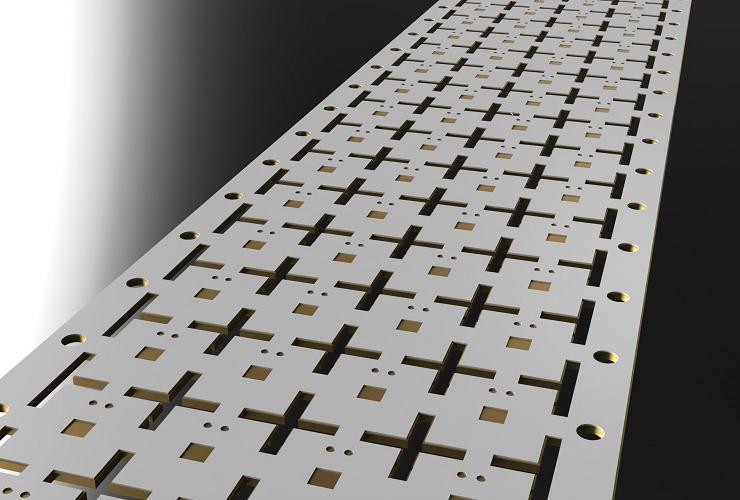More light in the long run
• Junction temperature and thermal management of High Brightness LEDs (HMLEDs) optimized
• Fraunhofer Institute completes tests on substrates
In close collaboration with the Fraunhofer Institute for Reliability and Microintegration (IZM) Heraeus has continued to work on the design optimization of its SCB substrates for LEDs. Quite apart from the results already gained in the field of short duration LED applications, the focus this time was put on applications of a longer duration. The aim now was to lower the junction temperature TJ of the applied LED chips and so enable a direct readout relating to the overall effectiveness of the thermal management in comparison to other substrate solutions. (The junction temperature is the temperature which arises in the barrier layer and thus its relevance to the ageing process of the semiconductor).

The theoretical FEM simulation had already prescribed at which parameters the junction temperature could be lowered by several degrees Celsius. Armed with this data, together with best practice approaches and optimum simulation results, the engineers laid down the sample substrate and assembled it in line with the predefined design.
The subsequent (de facto) thermal analysis of the HBLEDs at the IZM proved that thanks to the optimized choice of material and the simultaneously defined and perfected design the TJ sank by as much as 12 °C in comparison to standard designs for short duration applications when operating under an electrical load of 1.5 W. This drop in temperature has an extremely positive effect on the durability and brightness of the HBLED.
The cause variables taken into consideration were: Enlargement of the area below the chip (the so-called heat slug), increase in the thickness of the base layer (metallic foil) from 150 to 500 µm, and augmentation of the thermal conductivity of this base layer.
Ultimately, these tests also served to demonstrate that the SCB substrates have enormous potential for improving thermal management. The results gained from the project testify to an equivalent potential in the short and long duration applications of SCB technology as opposed to competititive technologies. However, the crucial factor centres on the particular applications of the individual user and the actual, specific substrate solution resulting from these.
About Heraeus
Heraeus is a globally active precious metal and technology Group based in Hanau. The company has been family-owned for 160 years. Our business groups cover precious metals, materials and technologies, sensors, biomaterials, medical, dental, and pharmaceutical products, quartz glass, and specialty light sources. In 2010 Heraeus generated product revenues of €4.1 billion and a precious metals trading revenue of €17.9 billion. Currently Heraeus has more than 12,900 employees in more than 120 companies. As a result Heraeus holds a truly leading position in all of its international key markets.





 CN
TW
EN
CN
TW
EN






